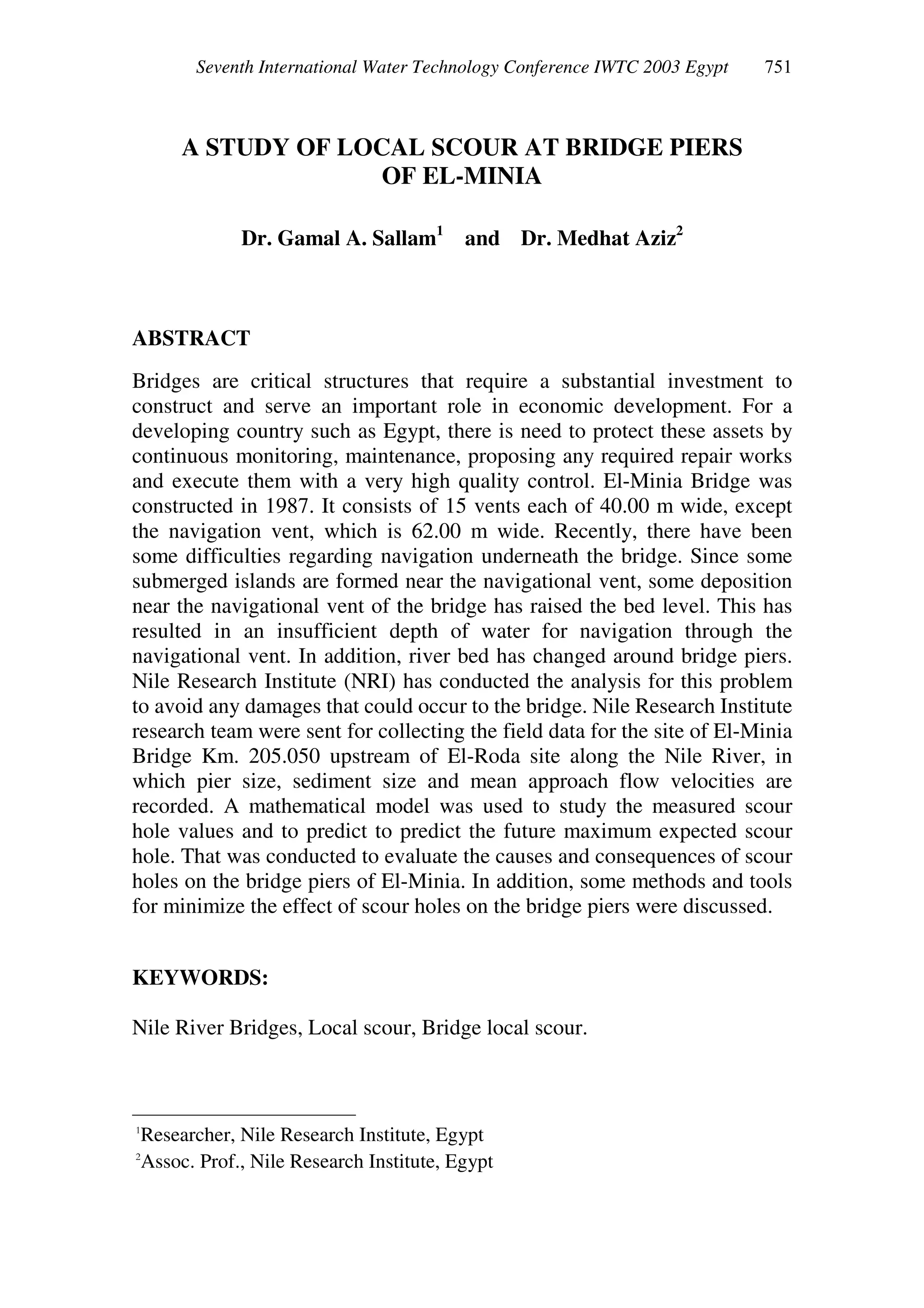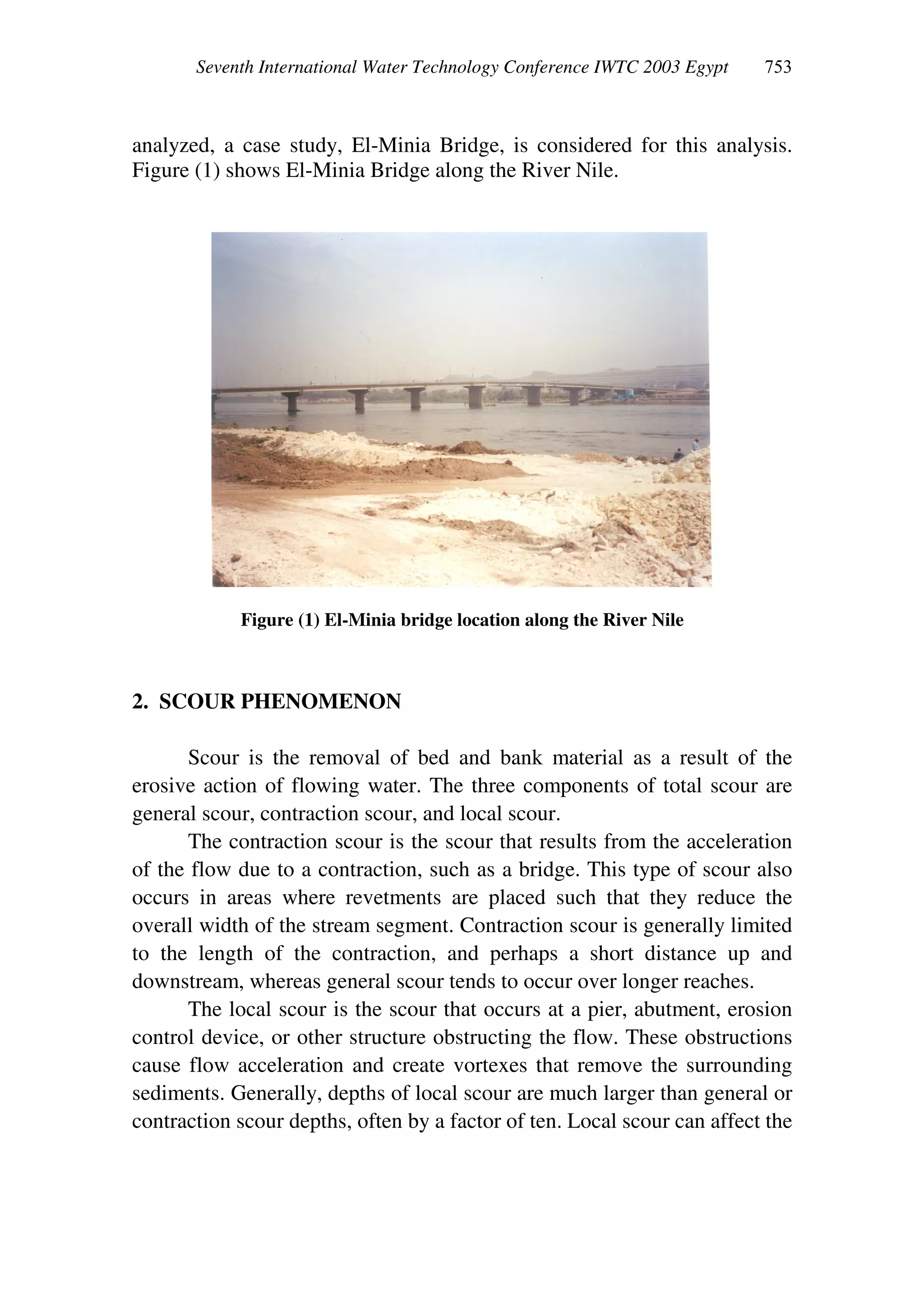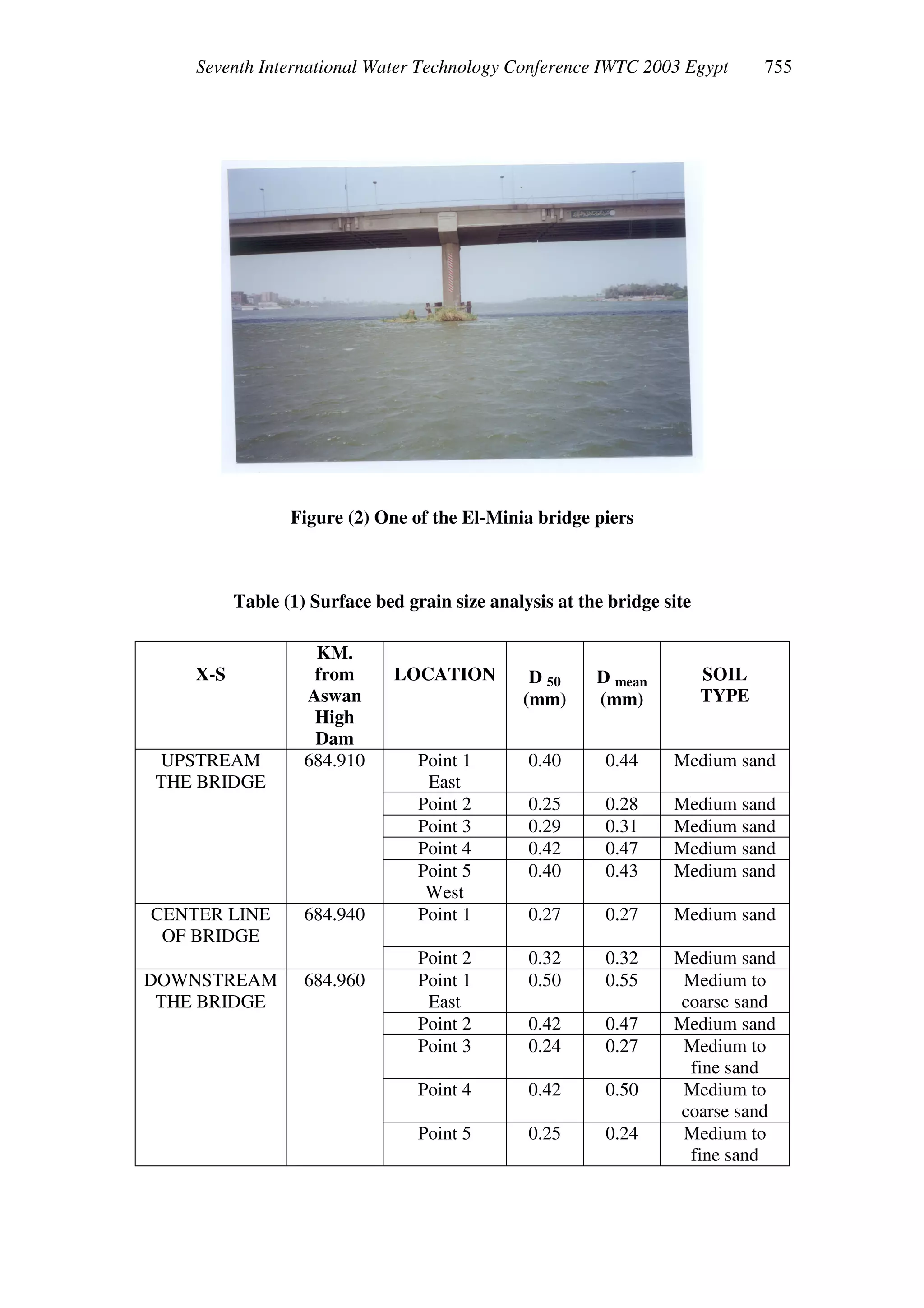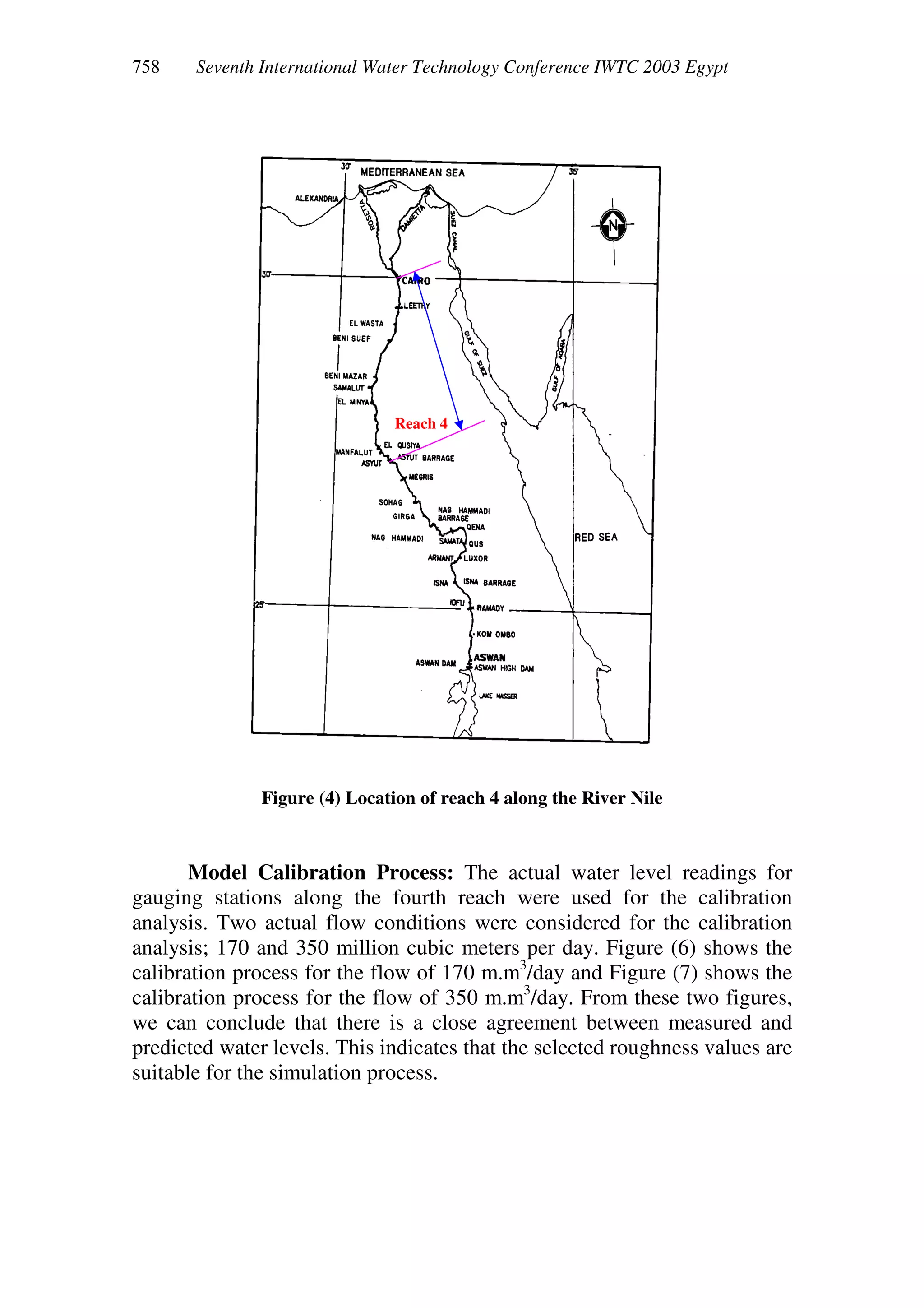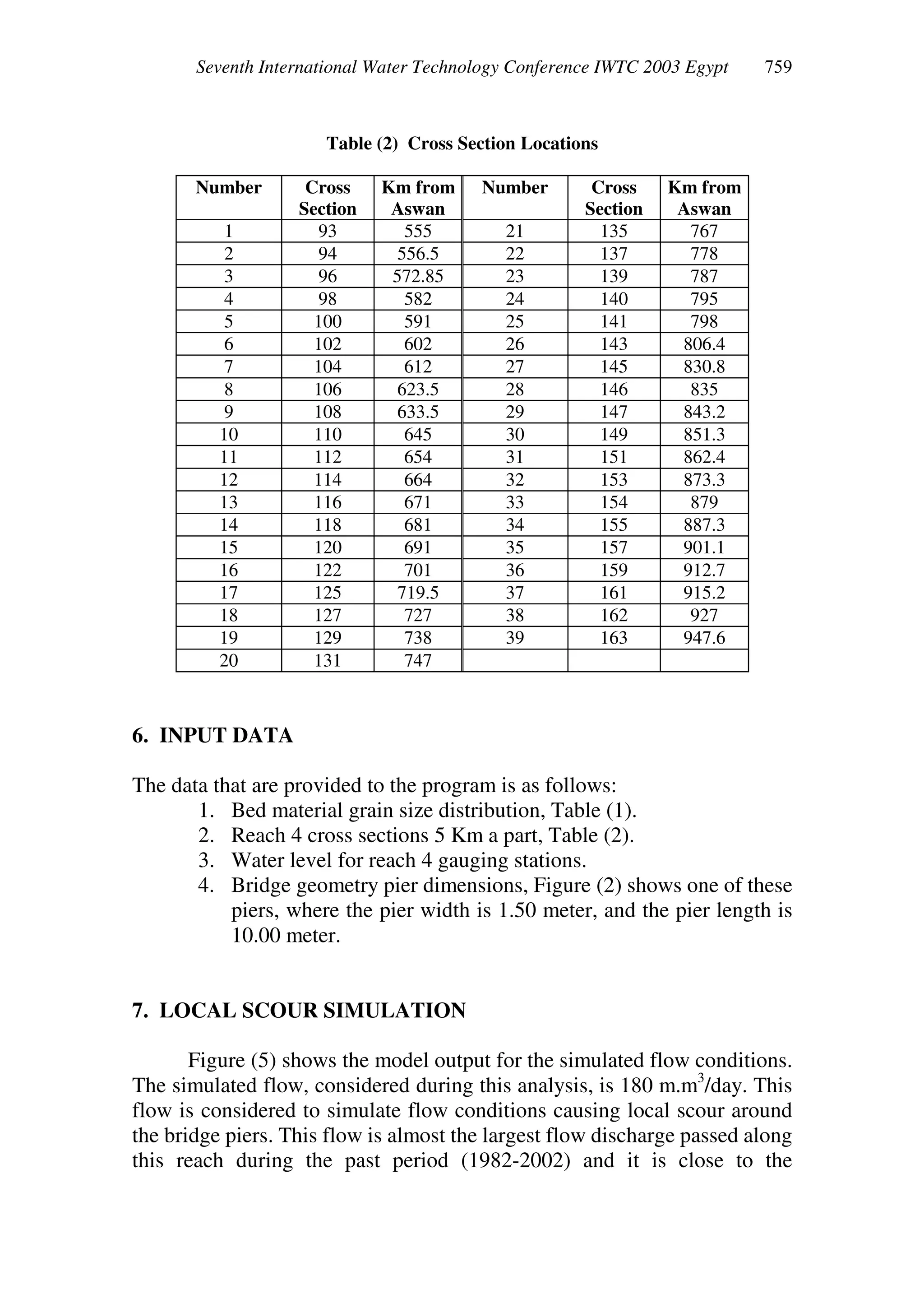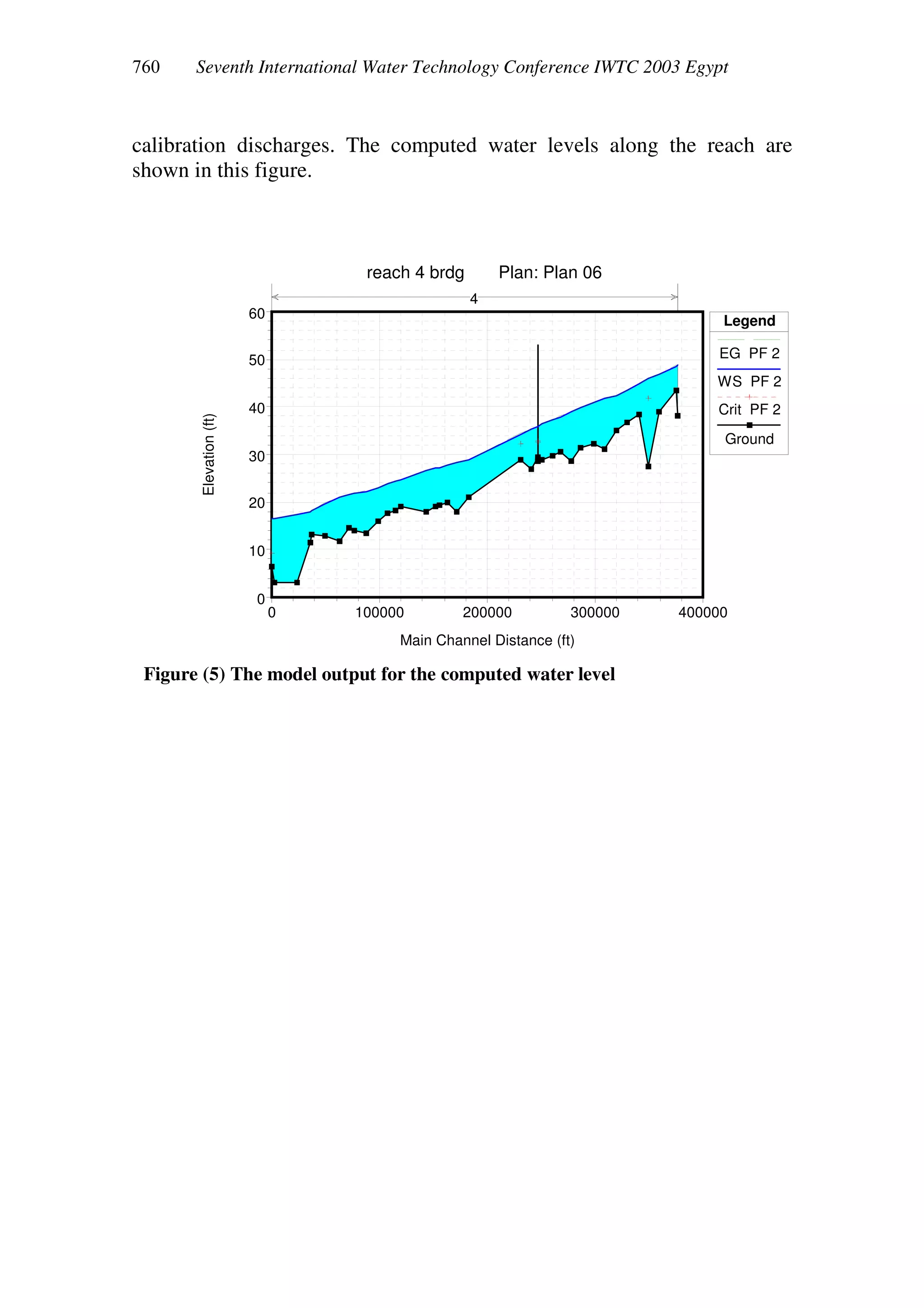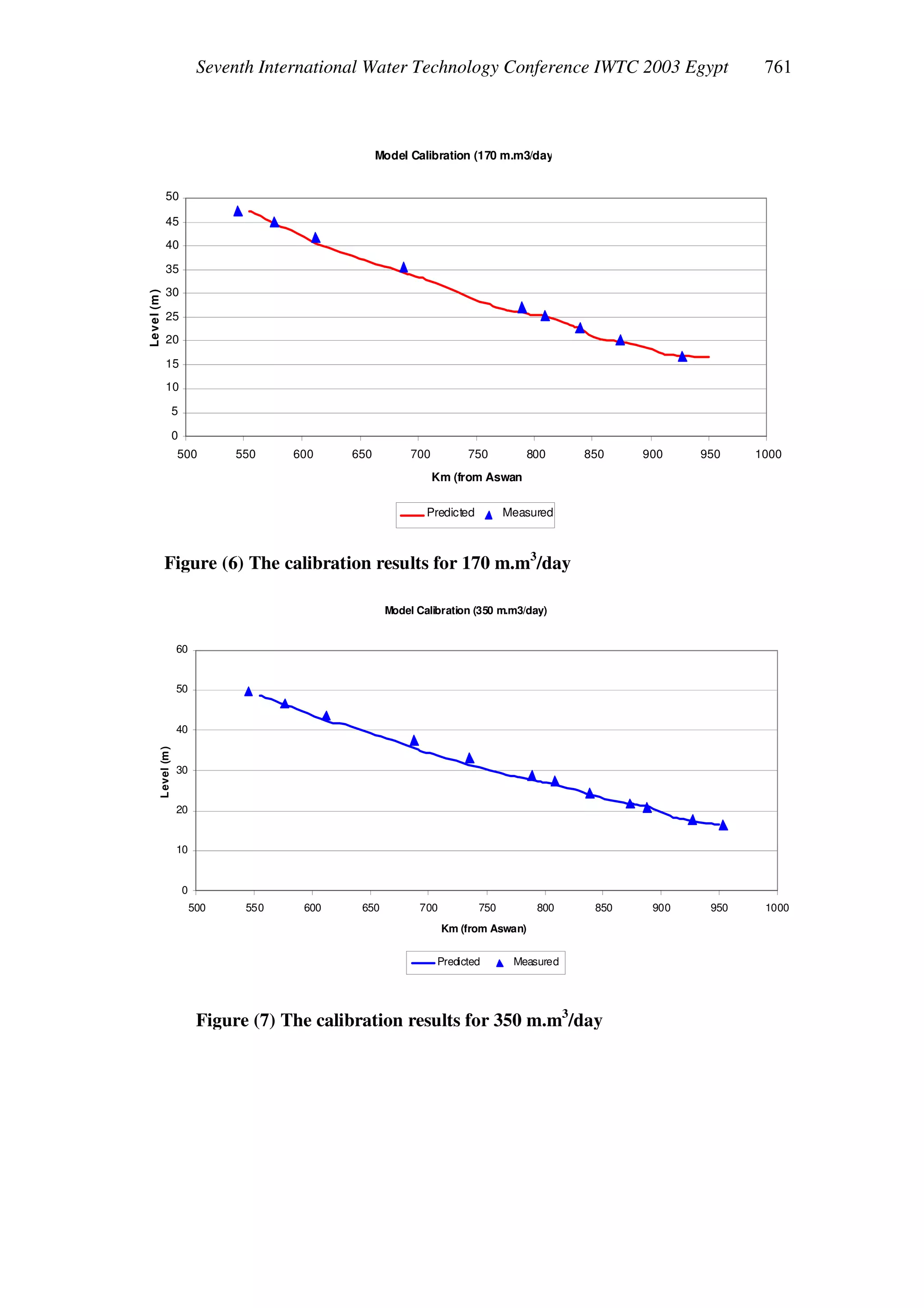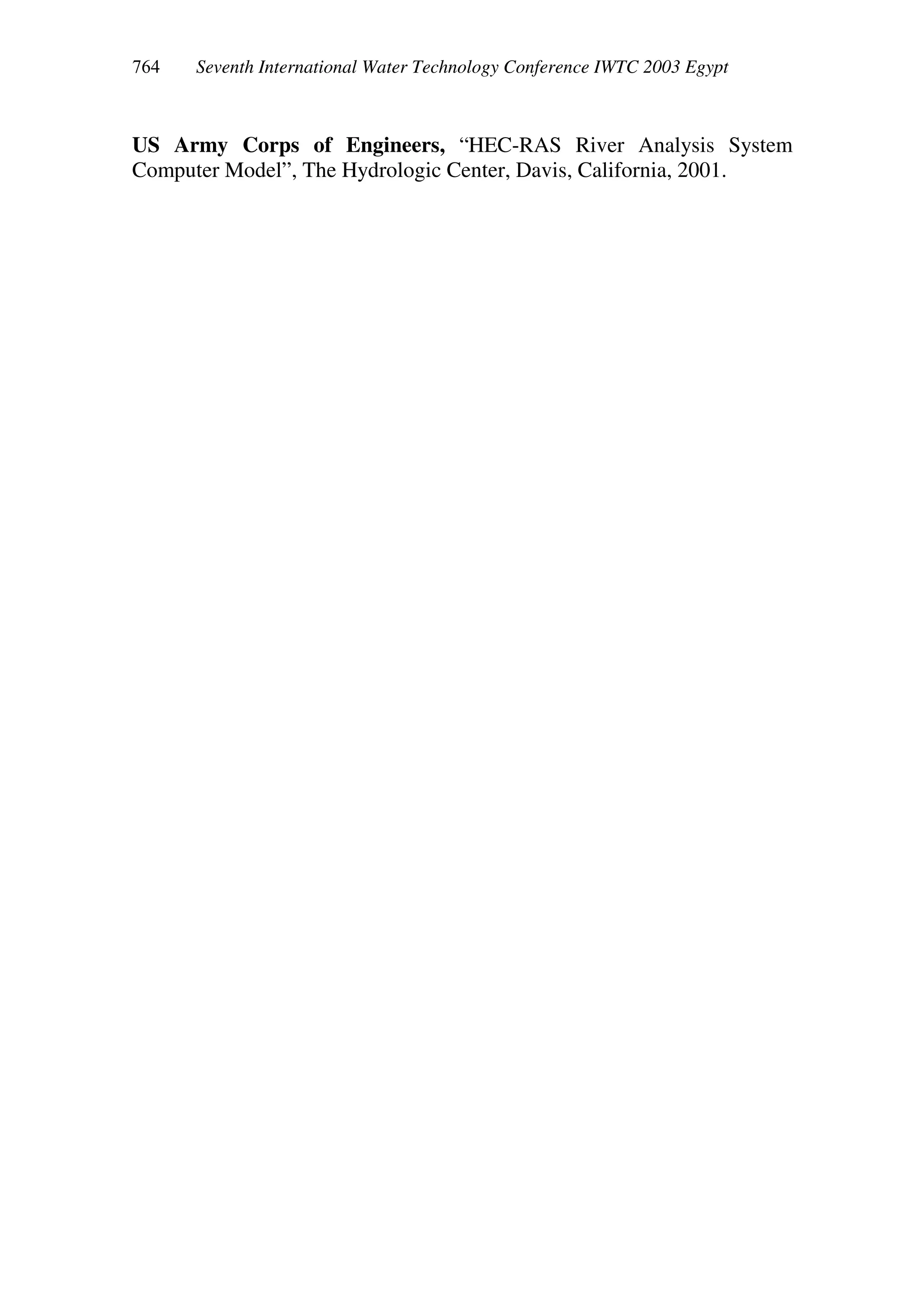1) Nile Research Institute conducted a study of local scour at the El-Minia Bridge piers in Egypt. Field investigations found that the river bed had changed around the bridge piers, with a maximum local scour depth of 4.6 meters occurring between 1982 and 2002.
2) A computer model (HEC-RAS) was used to simulate local scour for a flow of 180 cubic meters per second. The model results showed the contraction and pier scour depths expected for this flow condition. Maximum local scour depths were computed for each bridge pier.
3) Studying local scour is important for evaluating scour risks and impacts to bridge foundations, and for proposing mitigation measures to
